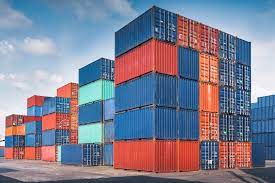General
Buy Shipping Containers Near Me: A Step-by-Step Guide

Are you in the market for shipping containers? Whether you need extra storage space or a unique project in mind, buying shipping containers near you can be a practical and cost-effective solution. In this step-by-step guide, we’ll walk you through the process of finding shipping containers in your local area, assessing their condition, and negotiating the best deal. From 20ft shipping containers to insulated and flat racks, we’ll cover it all.
Step 1: Start Your Search for Shipping Containers Near Me
The first step in acquiring a shipping container is finding one in your local area. To do this, you can employ various strategies:
1. Local Suppliers
Begin your search by looking for local suppliers and dealers who specialize in shipping containers. They often have a range of container types, including 20ft shipping containers, new shipping containers, used shipping containers for sale, and even specialized options like insulated containers and flat racks. A quick online search or phone call can connect you with these local resources.
2. Online Marketplaces
Online marketplaces can be a valuable tool in your search for shipping containers near you. Websites like Craigslist, eBay, and specialized container websites allow you to browse a wide selection of containers. Simply search for “shipping containers near me” or specify your location to find local sellers.
3. Container Rental Companies
Many container rental companies also offer containers for sale. Contact these companies to see if they have containers available for purchase. Rental companies may have well-maintained used shipping containers for sale.
4. Local Auctions and Classifieds
Check local auctions, classified ads, and industrial auctions in your area. These events can be an excellent opportunity to find shipping containers for sale, including used chassis for sale, container chassis and trailers, and more.
Step 2: Evaluating Container Condition
Once you’ve found potential containers, it’s crucial to assess their condition to ensure you’re making a sound investment. Here are some key aspects to consider:
1. Exterior Inspection
- Rust and Corrosion: Examine the container’s exterior for rust or corrosion. Surface rust is common but should be minimal. Pay attention to any deep rust or holes that could compromise the container’s integrity.
- Paint and Seals: Check the condition of the paint. A well-maintained container will have a good paint job. Also, inspect the seals around the container’s doors to ensure they are intact and waterproof.
- Dents and Damage: Look for dents, especially near the doors, as they can affect the container’s functionality.
2. Interior Inspection
- Cleanliness: Ensure that the interior is clean and free from odors, mold, or pests.
- Floor Condition: Examine the container’s flooring. It should be in good condition and free from any rot or damage.
3. Functionality
- Doors: Open and close the container doors to check for smooth operation. The locking mechanisms should work correctly.
- Ventilation: If you plan to use the container for specific items, check if it has adequate ventilation or if you’ll need to make modifications.
Step 3: Negotiating Prices
Negotiating the price of your shipping container is a critical step in the buying process. Here are some tips to help you secure the best deal:
1. Do Your Research
Before you start negotiations, research the current market prices for the type of container you’re interested in, be it a 20ft shipping container, insulated container, flat racks, or any other. Having this information will give you a clear understanding of a fair price range.
2. Ask About Additional Costs
Inquire about any additional costs that may be associated with the purchase, such as delivery, taxes, or modifications. Understanding the total cost will help you negotiate effectively.
3. Be Prepared to Walk Away
Don’t be afraid to walk away if the seller isn’t willing to meet your price. There are often multiple options available, and being willing to move on can give you more leverage in negotiations.
4. Inspect the Container Again
Once you’ve negotiated a price, inspect the container one more time to ensure it meets your expectations. If you find any issues, use them as leverage to negotiate a further price reduction.
5. Payment Terms
Discuss payment terms with the seller. Some may require full payment upfront, while others may accept a deposit with the remainder due upon delivery.
6. Get Everything in Writing
Ensure that all negotiated terms, including the price, delivery schedule, and any modifications, are documented in a written agreement. This will protect both you and the seller.
Step 4: Connect with MidMountainContainers
For a one-stop solution in your quest for shipping containers, consider connecting with Mid Mountain Containers. They offer a wide range of storage solutions, including 20ft shipping containers, insulated containers, flat racks, and much more. MidMountainContainers can help you find the perfect container to meet your specific needs, whether for personal or commercial purposes. They offer both new and used containers, ensuring that you have a variety of options to choose from.
Conclusion
Buying shipping containers near you doesn’t have to be a complex process. By following this step-by-step guide, you can navigate the market effectively, evaluate container conditions, and negotiate the best deal. Whether you need a 20ft shipping container for extra storage space or specialized containers for unique projects, this guide will help you make an informed decision and find the perfect container for your needs. Happy container shopping!





















